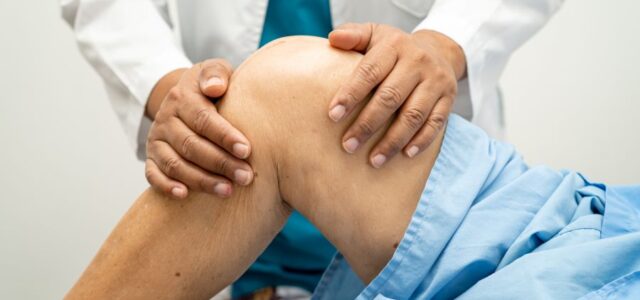Call for your appointment today 914-666-4665 | Mt. Kisco, New York

In their article, “Medically Managed Lyme Periprosthetic Joint Infection: A Case Report,” Saar et al. describe the case involving a patient with acute Lyme arthritis which was complicated by a previous total knee arthroplasty.
A 68-year-old man living in Virginia presented to a medical clinic with suprapatellar swelling, pain, heat, and mild erythema of the left knee. “He noted pain with passive flexion and extension of the knee, as well as a noticeable limp,” the authors state.
Twelve years earlier, the man had a total knee arthroplasty for degenerative joint disease.
PCR testing was positive for Borrelia. The patient’s left knee was drained but follow-up testing still detected Borrelia DNA.
However, this patient was treated successfully with 3 months of doxycycline.
“Upon completion of 90 days of doxycycline therapy, the patient returned for further evaluation, reporting the cessation of transient swelling and the absence of pain,” the authors state.
“Given our success with oral antibiotics, medical management may be a viable treatment for patients with acute, uncomplicated Lyme [periprosthetic joint infection],” the authors state.
Treatment of Lyme periprosthetic joint infection
Because there are only a handful of cases of PJI reported in the literature, there are no recommended treatment guidelines.
“This has left physicians trying to blend the treatment guidelines for Lyme arthritis, which is medically managed with antibiotics, and PJIs, which involve invasive surgical procedures,” the authors state.
Lyme periprosthetic joint infections are rare, difficult to recognize and typically require surgical intervention.
Out of the five cases reported in the literature, 4 patients were treated successfully with surgery and antibiotics, while only 1 patient was treated successfully with IV and oral antibiotics.
Authors Conclude:
- “When a patient presents with atraumatic knee effusion, especially in areas where Lyme disease is prevalent, Lyme arthritis should be investigated.”
- Furthermore, “given the prevalence of Lyme arthritis in areas that are endemic to Lyme disease, it may be of benefit to add a synovial fluid PCR test, the gold standard for diagnosis of Lyme arthritis.”
- “Medical management of Lyme PJI may be a viable option for patients who present with new onset symptoms, avoiding the risk of operative interventions.”
Related Articles:
Lyme disease mimics prosthetic joint infection following knee replacement
5 cases of Lyme arthritis following an operation
MRI can help identify Lyme arthritis in children, avoid unnecessary surgery
References:
- Saar A, Fairbanks S. Medically Managed Lyme Periprosthetic Joint Infection: A Case Report. Cureus. 2024 Mar 19;16(3):e56457. doi: 10.7759/cureus.56457. PMID: 38638742; PMCID: PMC11025306.



